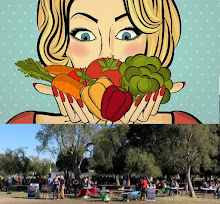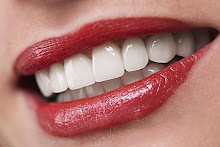.
 |
| The new fluidity aims to make us all bi, gay, NB |
The body (form) is thought to be most obviously “me,” what “I” regard as the most tangible part of my “self.”
Around it
therefore are constructed many views, all of them distorted and perverted to some extent, which prevent insight arising into the body as
it really is.
This book, Bag of Bones, is a small Buddhist anthology relating to the
body in various ways. It presents material which, if
contemplated by the earnest and sincere student of the Dharma, will eventually provide fruitful insight and,
thereby, freedom from the many cravings, obsessions, addictions, lusts, desires, and fears centered
on the body.
Such thirst for pleasures in which the body is the
instrument (though it is in the heart-mind where they
dwell), awaken and intensify greed of all kinds, for instance, for food and sex and ego boosts of all kinds.
Greed (attraction, grasping, clinging, addiction, attachment) often accompanies pleasurable sensations. Therefore, desire (craving) needs a
rather bitter medicine to combat it.
So the number of items contained here on the unattractiveness of the body, its decay
and death — all unpleasant matters — is high. Some of the material concerned with bodily unattractiveness is like a healing balm that need only be taken while the disease of greedy-lust is
active. Afterwards, it may be discontinued and set aside.
It is important
to understand this so as not to form the mistaken impression
that the Buddha advocated viewing all beauty as loathsome. There is a great deal of beauty in this world, not all of which causes us to become obsessed with harmful things.
It is only that there is a hook hidden in beauty, an unseen danger that gets tangled with
the greed in one’s heart and leads to more and more
complications and difficulties.
Fears center around aging and disease, decay and death. They
are never overcome by pretending they do not exist. Ostriches are said to bury their heads in the sand at the approach of
enemies.
Only resolutely facing the inevitable features of
life can bring insight and the dispelling of fear.
The Buddha’s instructions on how to contemplate the body
are addressed to those who are able, through their lifestyle,
to practice them.
This means in effect monks and nuns, novices, together with dedicated lay people. The former group have
this contemplation given to them by their monastic teachers at the
time of going-forth from the homebound to the left-home life, which is when we might most need such a medicine to combat lust.
 |
| Gallery of the World's Ugliest Women : r/dalle2 |
Laypeople keeping the Five Precepts
have contentment with their partners as an important part
of their practice. Sex is a natural part of their life but should
still be restrained and kept within the bounds of the Third
Precept. If not, how much trouble might follow!
But some few may wish to live without sexual attachments, and this cannot
be done in the way of Dhamma (the Buddha's Teaching or natural truth) by ignoring the power of
our human sexual drive or by repressing and suppressing it.
Only when it is
treated with mindfulness (nonjudgmental awareness and observation) can it be transcended. It does not last forever. It is overcome by the first meditative absorption and uprooted by the stages of enlightenment.
The aspect
of mindfulness needed for this is the subject, or
rather the interrelated subjects, of this book.
Bhutan: Last Himalayan Buddhist kingdom
In today's world we are subjected to a mass media bombardment
of sensuality. Sex especially is
used as the bait (attractant) to sell things, a titillation of sensory
experience.
When this is continued, defilements of mind, notably lust, greed, and
attachment, are sure to be strengthened. When this has
happened, the result is not more happiness but only an increase of disappointment (dukkha, stress, ill, woe), suffering, trouble, and difficulties.
 |
| I stared until they started to look like skeletons, bags of bones, all of them. I ought to let go, become a monk, and gain enlightenment because flesh and bones are gross. I didn't tell them. |
.
The medicine
for such over-indulgence and over-stimulation is given here.
It is said that this subject of meditation is unique to the
Buddha’s Teachings, the Dhamma, and that elsewhere it is not clearly
taught.
This is unsurprising as we find that desire is
sometimes accepted as being “natural.” Wherever desires
are viewed as “natural,” that is, inherent in one’s nature or
self, nothing much can be done about them.
But the Buddha
analyzed desires into those which are wholesome — the zeal to
practice Dhamma, for instance — and the unwholesome
ones, among which are greediness and lust.
They may not be
gross either, as in the case of the meditator who is greedy
for bliss, or visions, psychedelic experiences, and attached to such things.
The
Buddha has provided the medicine for all unwholesome
desires, and according to our various ways of life we can
use it to effect partial or complete cures.
When the emphasis is so much on sensuality, youth, and
beauty as we find now, the darker sides of life get pushed
away and attempts are made, always unsuccessful, to sweep
them under the rug. Those who try to do so will not be
pleased with the exercises contained in the Buddha’s
contemplation of the body as it really is.
 |
| Look at those breasts and butt colon! |
Such
jolts are not pleasant. Rather than leave it until one is forced to know the body’s unpleasant sides, it is better to acquaint
one’s emotions with this knowledge gradually.
In this spirit, Bag of Bones is being published.
Unfortunately,
being only a book, it cannot give person-to-person advice on
special problems. It can only offer some general guidelines
to people who are interested in reducing their greediness and
lust.
 |
| It's only skin deep for reptilian hybridization |
A word of warning: meditation on the unattractiveness
of the body can be very potent and should only be practiced
with moderation and care, especially if one has no personal
contact with a teacher of Buddhist meditation.
If fear and
anxiety, or other extreme unwholesome emotional states
arise after practice of it, then it will be better to lay it down
and take up loving kindness (mettā) or recollection of the
Buddha (Buddhānussati) as one’s meditation instead.
This book, therefore, is not so much for beginners in
Buddhism but rather for those who have already practiced
for some time. May it inspire many people to practice the
Dhamma more intently!
- Wheel 271, Bag of Bones: A Miscellany on the Body (Australian Theravada Buddhist monk Ven. Khantipalo, Buddhist Publication Society, Kandy, Sri Lanka; excerpt edited by Amber Larson and Dhr. Seven, Wisdom Quarterly






















































































































































































































































No comments:
Post a Comment